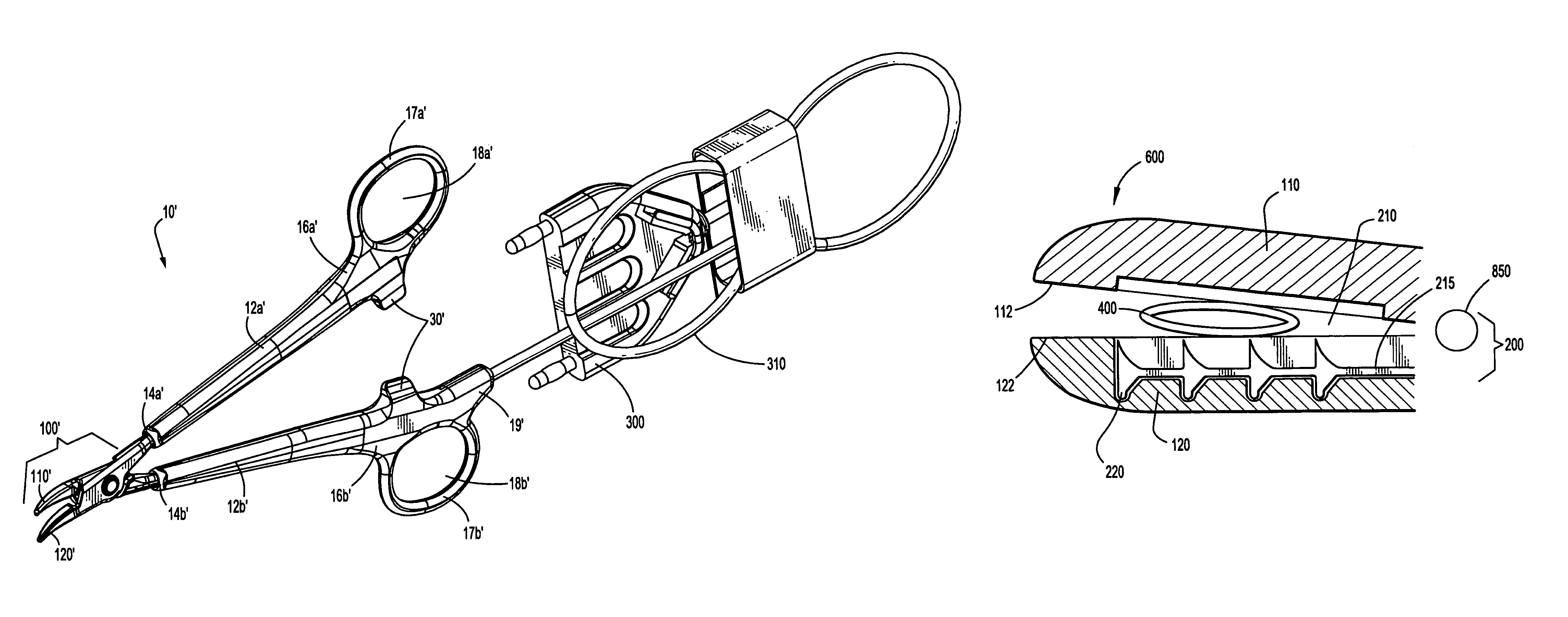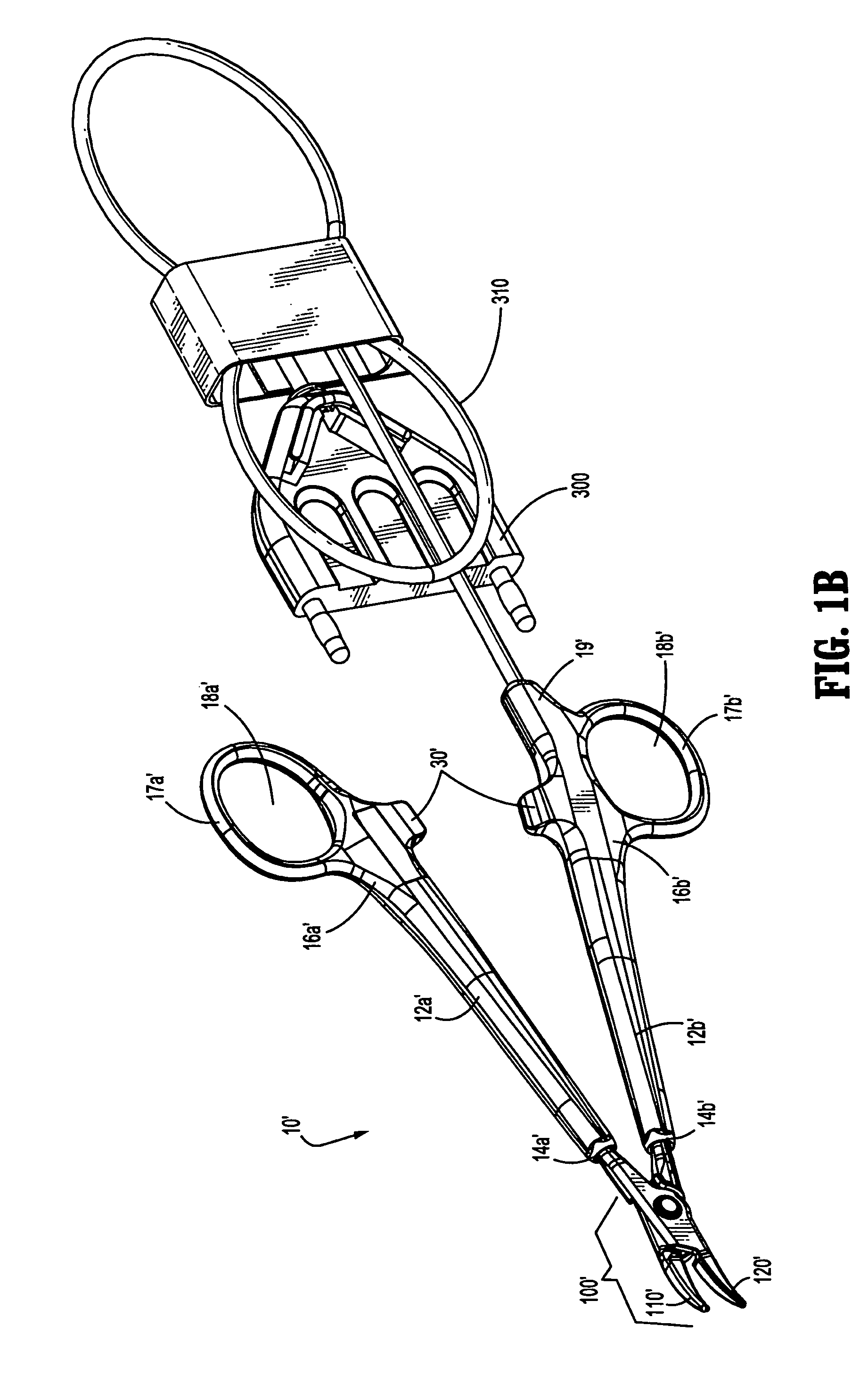Apparatus and method for transecting tissue on a bipolar vessel sealing instrument
a bipolar vessel and tissue technology, applied in the field of electrosurgical instruments, can solve the problems of ineffective or non-uniform sealing, relatively ineffective vessel sealing purposes, and difficult to adequately control the thickness of the resulting sealed tissu
- Summary
- Abstract
- Description
- Claims
- Application Information
AI Technical Summary
Problems solved by technology
Method used
Image
Examples
Embodiment Construction
[0047]It has been found that by providing a blade assembly where a blade body is in sliding communication with the blade channel, surgeons can more readily and more easily produce a consistent, high quality tissue transection while limiting movement of the blade and / or end effector assembly. By minimizing movement of the blade and / or end effector assembly during use the surgeon can more accurately divide and / or seal tissue. Furthermore, minimizing movement of the end effector assembly can also reduce thermal spread across or to adjacent tissue. For the purposes herein the term “thermal spread” refers generally to the heat transfer (heat conduction, heat convection or electrical current dissipation) dissipating along the periphery of the electrically conductive or electrically active surfaces to adjacent tissue. This can also be termed “collateral damage” to adjacent tissue.
[0048]The configuration of the blade assembly, having a blade that is in sliding communication with at least on...
PUM
 Login to View More
Login to View More Abstract
Description
Claims
Application Information
 Login to View More
Login to View More - R&D
- Intellectual Property
- Life Sciences
- Materials
- Tech Scout
- Unparalleled Data Quality
- Higher Quality Content
- 60% Fewer Hallucinations
Browse by: Latest US Patents, China's latest patents, Technical Efficacy Thesaurus, Application Domain, Technology Topic, Popular Technical Reports.
© 2025 PatSnap. All rights reserved.Legal|Privacy policy|Modern Slavery Act Transparency Statement|Sitemap|About US| Contact US: help@patsnap.com



